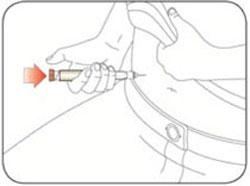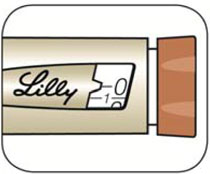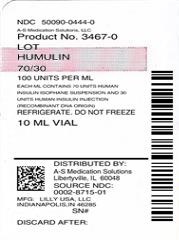FULL PRESCRIBING INFORMATION
1 INDICATIONS AND USAGE
HUMULIN 70/30 is a fixed ratio premix recombinant human insulin formulation indicated to improve glycemic control in adult patients with diabetes mellitus.
2 DOSAGE AND ADMINISTRATION
2.1 Important Administration Instructions
Inspect HUMULIN 70/30 visually before use. It should not contain particulate matter and should appear uniformly cloudy after mixing. Do not use HUMULIN 70/30 if particulate matter is seen. Do not mix HUMULIN 70/30 with any other insulins or diluents.
2.2 Route of Administration
HUMULIN 70/30 should only be administered subcutaneously. Administer in the subcutaneous tissue of the abdominal wall, thigh, upper arm, or buttocks. To reduce the risk of lipodystrophy, rotate the injection site within the same region from one injection to the next [see Adverse Reactions (6)].
Do not administer HUMULIN 70/30 intravenously or intramuscularly and do not use HUMULIN 70/30 in an insulin infusion pump.
2.3 Dosage Information
Individualize and adjust the dosage of HUMULIN 70/30 based on the individual's metabolic needs, blood glucose monitoring results and glycemic control goal. Dosage adjustments may be needed with changes in physical activity, changes in meal patterns (i.e., macronutrient content or timing of food intake), changes in renal or hepatic function or during acute illness [see Warnings and Precautions (5.2, 5.3), and Use in Specific Populations (8.6, 8.7)].
The proportion of rapid acting and long acting insulin is fixed in a premixed insulin such as HUMULIN 70/30. Independent adjustment of the basal or prandial dose is not possible when using a premixed insulin.
Physiological factors, disease states and concomitant drugs may impact the onset and duration of action of all insulins. HUMULIN 70/30 dose requirements may change with changes in level of physical activity, meal patterns (i.e., macronutrient content or timing of food intake), during major illness, or with some coadministered drugs [see Warnings and Precautions (5.3), Drug Interactions (7), and Use in Specific Populations (8.6, 8.7)].
3 DOSAGE FORMS AND STRENGTHS
HUMULIN 70/30 injectable suspension: 100 units per mL (U-100) is available as:
- 10 mL vials
- 3 mL vials
- 3 mL HUMULIN 70/30 KwikPen (prefilled)
5 WARNINGS AND PRECAUTIONS
5.1 Never Share a HUMULIN 70/30 KwikPen or Syringe Between Patients
HUMULIN 70/30 KwikPens must never be shared between patients, even if the needle is changed. Patients using HUMULIN 70/30 vials must never share needles or syringes with another person. Sharing poses a risk for transmission of blood-borne pathogens.
5.2 Changes in Insulin Regimen
Changes in insulin strength, manufacturer, type, or method of administration may affect glycemic control and predispose to hypoglycemia [see Warnings and Precautions (5.3)] or hyperglycemia. These changes should be made cautiously and under close medical supervision and the frequency of blood glucose monitoring should be increased.
5.3 Hypoglycemia
Hypoglycemia is the most common adverse reaction associated with insulins, including HUMULIN 70/30. Severe hypoglycemia can cause seizures, may be life-threatening or cause death. Hypoglycemia can impair concentration ability and reaction time; this may place an individual and others at risk in situations where these abilities are important (e.g., driving or operating other machinery).
Hypoglycemia can happen suddenly and symptoms may differ in each individual and change over time in the same individual. Symptomatic awareness of hypoglycemia may be less pronounced in patients with longstanding diabetes, in patients with diabetic nerve disease, in patients using medications that block the sympathetic nervous system (e.g., beta-blockers) [see Drug Interactions (7)], or in patients who experience recurrent hypoglycemia.
Risk Factors for Hypoglycemia
The risk of hypoglycemia after an injection is related to the duration of action of the insulin and, in general, is highest when the glucose lowering effect of the insulin is maximal. As with all insulin preparations, the glucose lowering effect time course of HUMULIN 70/30 may vary in different individuals or at different times in the same individual and depends on many conditions, including the area of injection as well as the injection site blood supply and temperature [see Clinical Pharmacology (12.2)]. Other factors which may increase the risk of hypoglycemia include changes in meal pattern (e.g., macronutrient content or timing of meals), changes in level of physical activity, or changes to co-administered medication [see Drug Interactions (7)]. Patients with renal or hepatic impairment may be at higher risk of hypoglycemia [see Use in Specific Populations (8.6, 8.7)].
Risk Mitigation Strategies for Hypoglycemia
Patients and caregivers must be educated to recognize and manage hypoglycemia. Self-monitoring of blood glucose plays an essential role in the prevention and management of hypoglycemia. In patients at higher risk for hypoglycemia and patients who have reduced symptomatic awareness of hypoglycemia, increased frequency of blood glucose monitoring is recommended.
5.4 Hypersensitivity Reactions
Severe, life-threatening, generalized allergy, including anaphylaxis, can occur with insulin products, including HUMULIN 70/30. If hypersensitivity reactions occur, discontinue HUMULIN 70/30; treat per standard of care and monitor until symptoms and signs resolve [see Adverse Reactions (6)]. HUMULIN 70/30 is contraindicated in patients who have had hypersensitivity reactions to HUMULIN 70/30 or any of its excipients [see Contraindications (4)].
5.5 Hypokalemia
All insulin products, including HUMULIN 70/30, cause a shift in potassium from the extracellular to intracellular space, possibly leading to hypokalemia. Untreated hypokalemia may cause respiratory paralysis, ventricular arrhythmia, and death. Monitor potassium levels in patients at risk for hypokalemia if indicated (e.g., patients using potassium-lowering medications, patients taking medications sensitive to serum potassium concentrations).
5.6 Fluid Retention and Heart Failure with Concomitant Use of PPAR-gamma Agonists
Thiazolidinediones (TZDs), which are peroxisome proliferator-activated receptor (PPAR)-gamma agonists, can cause dose-related fluid retention, particularly when used in combination with insulin. Fluid retention may lead to or exacerbate heart failure. Patients treated with insulin, including HUMULIN 70/30, and a PPAR-gamma agonist should be observed for signs and symptoms of heart failure. If heart failure develops, it should be managed according to current standards of care, and discontinuation or dose reduction of the PPAR-gamma agonist must be considered.
6 ADVERSE REACTIONS
The following adverse reactions are discussed elsewhere in the labeling:
- Hypoglycemia [see Warnings and Precautions (5.3)].
- Hypokalemia [see Warnings and Precautions (5.5)].
The following additional adverse reactions have been identified during post-approval use of HUMULIN 70/30. Because these reactions are reported voluntarily from a population of uncertain size, it is not always possible to reliably estimate their frequency or to establish a causal relationship to drug exposure.
Allergic Reactions
Some patients taking HUMULIN 70/30 have experienced erythema, local edema, and pruritus at the site of injection. These conditions were usually self-limiting. Severe cases of generalized allergy (anaphylaxis) have been reported [see Warnings and Precautions (5.4)].
Peripheral Edema
Some patients taking HUMULIN 70/30 have experienced sodium retention and edema, particularly if previously poor metabolic control is improved by intensified insulin therapy.
Lipodystrophy
Administration of insulin subcutaneously, including HUMULIN 70/30, has resulted in lipoatrophy (depression in the skin) or lipohypertrophy (enlargement or thickening of tissue) [see Dosage and Administration (2.2)] in some patients.
7 DRUG INTERACTIONS
7.1 Drugs That May Increase the Risk of Hypoglycemia
The risk of hypoglycemia associated with HUMULIN 70/30 use may be increased when co-administered with antidiabetic agents, salicylates, sulfonamide antibiotics, monoamine oxidase inhibitors, fluoxetine, disopyramide, fibrates, propoxyphene, pentoxifylline, ACE inhibitors, angiotensin II receptor blocking agents, and somatostatin analogs (e.g., octreotide). Dose adjustment and increased frequency of glucose monitoring may be required when HUMULIN 70/30 is co-administered with these drugs.
7.2 Drugs That May Decrease the Blood Glucose Lowering Effect of HUMULIN 70/30
The glucose lowering effect of HUMULIN 70/30 may be decreased when co-administered with corticosteroids, isoniazid, niacin, estrogens, oral contraceptives, phenothiazines, danazol, diuretics, sympathomimetic agents (e.g., epinephrine, albuterol, terbutaline), somatropin, atypical antipsychotics, glucagon, protease inhibitors, and thyroid hormones. Dose adjustment and increased frequency of glucose monitoring may be required when HUMULIN 70/30 is co-administered with these drugs.
7.3 Drugs That May Increase or Decrease the Blood Glucose Lowering Effect of HUMULIN 70/30
The glucose lowering effect of HUMULIN 70/30 may be increased or decreased when co-administered with beta-blockers, clonidine, lithium salts, and alcohol. Pentamidine may cause hypoglycemia, which may sometimes be followed by hyperglycemia. Dose adjustment and increased frequency of glucose monitoring may be required when HUMULIN 70/30 is co-administered with these drugs.
7.4 Drugs That May Blunt Signs and Symptoms of Hypoglycemia
The signs and symptoms of hypoglycemia [see Warnings and Precautions (5.3)] may be blunted when beta-blockers, clonidine, guanethidine, and reserpine are co-administered with HUMULIN 70/30.
8 USE IN SPECIFIC POPULATIONS
8.1 Pregnancy
Risk Summary
All pregnancies have a background risk of birth defects, loss, or other adverse outcome regardless of drug exposure. This background risk is increased in pregnancies complicated by hyperglycemia and may be decreased with good metabolic control. It is essential for patients with diabetes or history of gestational diabetes to maintain good metabolic control before conception and throughout pregnancy. In patients with diabetes or gestational diabetes, insulin requirements may decrease during the first trimester, generally increase during the second and third trimesters, and rapidly decline after delivery. Careful monitoring of glucose control is essential in these patients. Therefore, female patients should be advised to tell their physicians if they intend to become, or if they become pregnant while taking HUMULIN 70/30.
8.3 Nursing Mothers
Endogenous insulin is present in human milk; it is unknown whether HUMULIN 70/30 is present in human milk. Insulin orally ingested is degraded in the gastrointestinal tract. No adverse reactions associated with infant exposure to insulin through the consumption of human milk have been reported. Good glucose control supports lactation in patients with diabetes. Women with diabetes who are lactating may require adjustments in their insulin dose.
8.4 Pediatric Use
Safety and effectiveness of HUMULIN 70/30 in patients less than 18 years of age has not been established.
8.5 Geriatric Use
The effect of age on the pharmacokinetics and pharmacodynamics of HUMULIN 70/30 has not been studied [see Clinical Pharmacology (12.3)]. Patients with advanced age using any insulin, including HUMULIN 70/30, may be at increased risk of hypoglycemia due to co-morbid disease and polypharmacy [see Warnings and Precautions (5.3)].
8.6 Renal Impairment
The effect of renal impairment on the pharmacokinetics and pharmacodynamics of HUMULIN 70/30 has not been studied [see Clinical Pharmacology (12.3)]. Patients with renal impairment are at increased risk of hypoglycemia and may require more frequent HUMULIN 70/30 dose adjustment and more frequent blood glucose monitoring.
8.7 Hepatic Impairment
The effect of hepatic impairment on the pharmacokinetics and pharmacodynamics of HUMULIN 70/30 has not been studied [see Clinical Pharmacology (12.3)]. Patients with hepatic impairment are at increased risk of hypoglycemia and may require more frequent HUMULIN 70/30 dose adjustment and more frequent blood glucose monitoring.
10 OVERDOSAGE
Excess insulin administration may cause hypoglycemia and hypokalemia [see Warnings and Precautions (5.3, 5.5)]. Mild episodes of hypoglycemia can be treated with oral glucose. Adjustments in drug dosage, meal patterns, or physical activity level may be needed. More severe episodes with coma, seizure, or neurologic impairment may be treated with intramuscular/subcutaneous glucagon or concentrated intravenous glucose. Sustained carbohydrate intake and observation may be necessary because hypoglycemia may recur after apparent clinical recovery. Hypokalemia must be corrected appropriately.
11 DESCRIPTION
HUMULIN 70/30 (70% human insulin isophane suspension and 30% human insulin injection [rDNA origin]) is a human insulin suspension. Human insulin is produced by recombinant DNA technology utilizing a non-pathogenic laboratory strain of Escherichia coli. HUMULIN 70/30 is a suspension of crystals produced from combining human insulin and protamine sulfate under appropriate conditions for crystal formation and mixing with human insulin injection. The amino acid sequence of HUMULIN 70/30 is identical to human insulin and has the empirical formula C257H383N65O77S6 with a molecular weight of 5808.
HUMULIN 70/30 is a sterile white suspension. Each milliliter of HUMULIN 70/30 contains 100 units of insulin human, 0.24 mg of protamine sulfate, 16 mg of glycerin, 3.78 mg of dibasic sodium phosphate, 1.6 mg of metacresol, 0.65 mg of phenol, zinc oxide content adjusted to provide 0.025 mg zinc ion, and Water for Injection. The pH is 7.0 to 7.8. Sodium hydroxide and/or hydrochloric acid may be added during manufacture to adjust the pH.
12 CLINICAL PHARMACOLOGY
12.1 Mechanism of Action
HUMULIN 70/30 lowers blood glucose by stimulating peripheral glucose uptake by skeletal muscle and fat, and by inhibiting hepatic glucose production. Insulins inhibit lipolysis and proteolysis, and enhance protein synthesis.
12.2 Pharmacodynamics
HUMULIN 70/30 combines an intermediate-acting insulin with the more rapid onset of action of regular human insulin. In healthy males (n=18) given HUMULIN 70/30 (0.3 unit/kg) subcutaneously, the pharmacologic effect began at approximately 50 minutes (range: 30 to 90 minutes) (see Figure 1). The effect was maximal at approximately 3.5 hours (range: 1.5 to 6.5 hours) and the mean duration of action was relatively long (approximately 23 hours; range: 18-24 hours).
Figure 1 should be considered only as a representative example since the time course of action of insulin may vary in different individuals or within the same individual. The rate of insulin absorption and consequently the onset of activity is known to be affected by the site of injection, physical activity level, and other variables [see Warnings and Precautions (5.3)].
12.3 Pharmacokinetics
Absorption — In healthy male subjects given HUMULIN 70/30 (0.3 unit/kg) subcutaneously, the mean peak serum concentration occurred at 2.2 hours (range: 1 to 5 hours) after dosing.
Metabolism — The uptake and degradation of insulin occurs predominantly in liver, kidney, muscle, and adipocytes, with the liver being the major organ involved in the clearance of insulin.
Elimination — Because of the absorption-rate limited kinetics of insulin mixtures, a true half-life cannot be accurately estimated from the terminal slope of the concentration versus time curve.
Specific Populations
The effects of age, gender, race, obesity, pregnancy, or smoking on the pharmacokinetics of HUMULIN 70/30 have not been studied.
Careful glucose monitoring and dose adjustments of insulin, including HUMULIN 70/30, may be necessary in patients with renal or hepatic dysfunction [see Use in Specific Populations (8.6, 8.7)].
17 PATIENT COUNSELING INFORMATION
Advise the patient to read the FDA-approved patient labeling (Patient Information and Instructions for Use).
Never Share a HUMULIN 70/30 KwikPen or Syringe Between Patients
Advise patients that they must never share a HUMULIN 70/30 KwikPen with another person, even if the needle is changed. Advise patients using HUMULIN 70/30 vials not to share needles or syringes with another person. Sharing poses a risk for transmission of blood-borne pathogens.
Hypoglycemia
Instruct patients on self-management procedures including glucose monitoring, proper injection technique, and management of hypoglycemia and hyperglycemia especially at initiation of HUMULIN 70/30 therapy. Instruct patients on handling of special situations such as intercurrent conditions (illness, stress, or emotional disturbances), an inadequate or skipped insulin dose, inadvertent administration of an increased insulin dose, inadequate food intake, and skipped meals. Instruct patients on the management of hypoglycemia.
Inform patients that their ability to concentrate and react may be impaired as a result of hypoglycemia. Advise patients who have frequent hypoglycemia or reduced or absent warning signs of hypoglycemia to use caution when driving or operating machinery [see Warnings and Precautions (5.3)].
Inform patients that accidental mix-ups between HUMULIN 70/30 and other insulins have been reported. Instruct patients to always carefully check that they are administering the correct insulin (e.g., by checking the insulin label before each injection) to avoid medication errors between HUMULIN 70/30 and other insulins.
Hypersensitivity Reactions
Advise patients that hypersensitivity reactions have occurred with HUMULIN 70/30. Inform patients on the symptoms of hypersensitivity reactions [see Warnings and Precautions (5.4)].
Females with Reproductive Potential
Advise females of reproductive potential with diabetes to inform their doctor if they are pregnant or are contemplating pregnancy [see Use in Specific Populations (8.1)].
Visual Inspection Prior to Use
Instruct patients to visually inspect HUMULIN 70/30 before use and to use HUMULIN 70/30 only if it contains no particulate matter and appears uniformly cloudy after mixing [see Dosage and Administration (2.1)].
Expiration Date
Instruct patients not to use HUMULIN 70/30 after the printed expiration date.
____________
HUMULIN® and HUMULIN® 70/30 KwikPen® are trademarks of Eli Lilly and Company.
Literature revised July 11, 2017
Marketed by: Lilly USA, LLC, Indianapolis, IN 46285, USA
Copyright © 1992, 2017, Eli Lilly and Company. All rights reserved.
LIN7030-0002-USPI-20170711
PATIENT INFORMATION
HUMULIN® (HU-mu-lin) 70/30
(70% human insulin isophane suspension and
30% human insulin injection [rDNA origin])
Do not share your HUMULIN 70/30 KwikPen or syringes with other people, even if the needle has been changed. You may give other people a serious infection or get a serious infection from them.
What is HUMULIN 70/30?
- HUMULIN 70/30 is a man-made insulin that is used to control high blood sugar in adults with diabetes mellitus.
Who should not use HUMULIN 70/30?
Do not use HUMULIN 70/30 if you:
- are having an episode of low blood sugar (hypoglycemia).
- have an allergy to HUMULIN 70/30 or any of the ingredients in HUMULIN 70/30.
Before using HUMULIN 70/30, tell your healthcare provider about all your medical conditions including, if you:
- have liver or kidney problems.
- take any other medicines, especially ones commonly called TZDs (thiazolidinediones).
- have heart failure or other heart problems. If you have heart failure, it may get worse while you take TZDs with HUMULIN 70/30.
- are pregnant, planning to become pregnant, or are breastfeeding.
- are taking new prescription or over-the-counter medicines, vitamins, or herbal supplements.
Before you start using HUMULIN 70/30, talk to your healthcare provider about low blood sugar and how to manage it.
How should I use HUMULIN 70/30?
- Read the Instructions for Use that come with your HUMULIN 70/30.
- Use HUMULIN 70/30 exactly as your healthcare provider tells you to.
- Know the type and strength of insulin you use. Do not change the type of insulin you use unless your healthcare provider tells you to. The amount of insulin and the best time for you to take your insulin may need to change if you use different types of insulin.
- Check your blood sugar levels. Ask your healthcare provider what your blood sugars should be and when you should check your blood sugar levels.
- Do not share your HUMULIN 70/30 KwikPen or syringes with other people, even if the needle has been changed. You may give other people a serious infection or get a serious infection from them.
Your HUMULIN 70/30 dose may need to change because of:
- change in level of physical activity or exercise, weight gain or loss, increased stress, illness, change in diet.
What should I avoid while using HUMULIN 70/30?
While using HUMULIN 70/30 do not:
- Drive or operate heavy machinery, until you know how HUMULIN 70/30 affects you.
- Drink alcohol or use prescription or over-the-counter medicines that contain alcohol.
What are the possible side effects of HUMULIN 70/30?
HUMULIN 70/30 may cause serious side effects that can lead to death, including:
-
low blood sugar (hypoglycemia). Signs and symptoms that may indicate low blood sugar include:
- dizziness or light-headedness, sweating, confusion, headache, blurred vision, slurred speech, shakiness, fast heartbeat, anxiety, irritability, or mood changes, hunger.
-
serious allergic reaction (whole body reaction). Get medical help right away, if you have any of these symptoms of an allergic reaction:
- a rash over your whole body, trouble breathing, a fast heartbeat, or sweating.
- low potassium in your blood (hypokalemia).
-
heart failure. Taking certain diabetes pills called thiazolidinediones or “TZDs” with HUMULIN 70/30 may cause heart failure in some people. This can happen even if you have never had heart failure or heart problems before. If you already have heart failure it may get worse while you take TZDs with HUMULIN 70/30. Your healthcare provider should monitor you closely while you are taking TZDs with HUMULIN 70/30. Tell your healthcare provider if you have any new or worse symptoms of heart failure including:
- shortness of breath, swelling of your ankles or feet, sudden weight gain
Treatment with TZDs and HUMULIN 70/30 may need to be adjusted or stopped by your healthcare provider if you have new or worse heart failure.
- shortness of breath, swelling of your ankles or feet, sudden weight gain
Get emergency medical help if you have:
- trouble breathing, shortness of breath, fast heartbeat, swelling of your face, tongue, or throat, sweating, extreme drowsiness, dizziness, confusion.
The most common side effects of HUMULIN 70/30 include:
- low blood sugar (hypoglycemia), allergic reactions including reactions at the injection site, skin thickening or pits at the injection site (lipodystrophy), itching, rash, weight gain, and swelling of your hands and feet. These are not all the possible side effects of HUMULIN 70/30. Call your doctor for medical advice about side effects. You may report side effects to FDA at 1-800-FDA-1088.
General information about the safe and effective use of HUMULIN 70/30:
Medicines are sometimes prescribed for purposes other than those listed in a Patient Information leaflet. You can ask your pharmacist or healthcare provider for information about HUMULIN 70/30 that is written for health professionals. Do not use HUMULIN 70/30 for a condition for which it was not prescribed. Do not give HUMULIN 70/30 to other people, even if they have the same symptoms that you have. It may harm them.
What are the ingredients in HUMULIN 70/30?
Active Ingredient: insulin human (rDNA origin)
Inactive Ingredients: protamine sulfate, glycerin, dibasic sodium phosphate, metacresol, phenol, zinc oxide, water for injection, hydrochloric acid or sodium hydroxide
For more information, call 1-800-545-5979 or go to www.humulin.com.
This Patient Information has been approved by the U.S. Food and Drug Administration.
Patient Information revised July 11, 2017
Marketed by: Lilly USA, LLC, Indianapolis, IN 46285, USA
Copyright © 1992, 2017, Eli Lilly and Company. All rights reserved.
LIN7030-0002-PPI-20170711
Instructions for Use
HUMULIN® (HU-mu-lin) 70/30
(70% human insulin isophane suspension and
30% human insulin injection [rDNA origin])
vial (100 Units/mL, U-100)
Read the Instructions for Use before you start taking HUMULIN 70/30 and each time you get a new HUMULIN 70/30 vial. There may be new information. This information does not take the place of talking to your healthcare provider about your medical condition or your treatment.
Do not share your syringes with other people, even if the needle has been changed. You may give other people a serious infection or get a serious infection from them.
Supplies needed to give your injection:
- a HUMULIN 70/30 vial
- a U-100 insulin syringe and needle
- 2 alcohol swabs
- 1 sharps container for throwing away used needles and syringes. See “Disposing of used needles and syringes” at the end of these instructions.
 |
 |
Preparing your HUMULIN 70/30 dose:
- Wash your hands with soap and water.
- Check the HUMULIN 70/30 label to make sure you are taking the right type of insulin. This is especially important if you use more than 1 type of insulin.
- Do not use HUMULIN 70/30 past the expiration date printed on the label or 31 days after you first use it.
- Always use a new syringe or needle for each injection to help ensure sterility and prevent blocked needles. Do not reuse or share your syringes or needles with other people. You may give other people a serious infection or get a serious infection from them.
Giving your HUMULIN 70/30 injection:
- Inject your insulin exactly as your healthcare provider has shown you.
- Change (rotate) your injection site for each injection.
Disposing of used needles and syringes:
- Put your used needles and syringes in a FDA-cleared sharps disposal container right away after use. Do not throw away (dispose of) loose needles and syringes in your household trash.
- If you do not have a FDA-cleared sharps disposal container, you may use a household container that is:
- -
- made of a heavy-duty plastic,
- -
- can be closed with a tight-fitting, puncture-resistant lid, without sharps being able to come out,
- -
- upright and stable during use,
- -
- leak-resistant, and
- -
- properly labeled to warn of hazardous waste inside the container.
- When your sharps disposal container is almost full, you will need to follow your community guidelines for the right way to dispose of your sharps disposal container. There may be state or local laws about how you should throw away used needles and syringes. For more information about safe sharps disposal, and for specific information about sharps disposal in the state that you live in, go to the FDA's website at: http://www.fda.gov/safesharpsdisposal.
- Do not dispose of your used sharps disposal container in your household trash unless your community guidelines permit this. Do not recycle your used sharps disposal container.
How should I store HUMULIN 70/30?
All unopened HUMULIN 70/30 vials:
- Store all unopened vials in the refrigerator.
- Do not freeze. Do not use if it has been frozen.
- Keep away from heat and out of direct light.
- Unopened vials can be used until the expiration date on the carton and label, if they have been stored in the refrigerator.
- Unopened vials should be thrown away after 31 days, if they are stored at room temperature.
After HUMULIN 70/30 vials have been opened:
- Store opened vials in the refrigerator or at room temperature below 86°F (30°C) for up to 31 days.
- Keep away from heat and out of direct light.
- Throw away all opened vials after 31 days of use, even if there is still insulin left in the vial.
General information about the safe and effective use of HUMULIN 70/30.
- Keep HUMULIN 70/30 vials, syringes, needles, and all medicines out of the reach of children.
- Always use a new syringe or needle for each injection.
- Do not reuse or share your syringes or needles with other people. You may give other people a serious infection or get a serious infection from them.
If you have any questions or problems with your HUMULIN, contact Lilly at 1-800-Lilly-Rx (1-800-545-5979) or call your healthcare provider for help. For more information on HUMULIN and insulin, go to www.humulin.com.
This Instructions for Use has been approved by the U.S. Food and Drug Administration.
Humulin® is a trademark of Eli Lilly and Company.
Instructions for Use revised: September 24, 2015
Marketed by: Lilly USA, LLC, Indianapolis, IN 46285, USA
Copyright © 1992, 2015, Eli Lilly and Company. All rights reserved.
LIN7030VL-0002-IFU-20150924
Instructions for Use
HUMULIN® 70/30 KwikPen®
(70% human insulin isophane suspension
30% human insulin injection [rDNA origin])
100 units/mL, 3 mL pen
Read the Instructions for Use before you start taking HUMULIN 70/30 and each time you get another KwikPen. There may be new information. This information does not take the place of talking to your healthcare provider about your medical condition or your treatment.
Do not share your HUMULIN 70/30 KwikPen with other people, even if the needle has been changed. You may give other people a serious infection or get a serious infection from them.
HUMULIN® 70/30 KwikPen® (“Pen”) is a disposable prefilled pen containing 300 units of HUMULIN 70/30. You can give yourself more than 1 dose from the Pen. Each turn (click) of the Dose Knob dials 1 unit of insulin. You can give from 1 to 60 units in a single injection. If your dose is more than 60 units, you will need to give yourself more than 1 injection. The Plunger only moves a little with each injection, and you may not notice that it moves. The Plunger will only reach the end of the cartridge when you have used all 300 units in the Pen.
This Pen is not recommended for use by the blind or visually impaired without the help of someone trained to use the Pen.
How to recognize your HUMULIN 70/30 KwikPen
- Pen color: Beige
- Dose Knob: Brown
- Labels: White label with brown stripe
Supplies you will need to give your injection
- HUMULIN 70/30 KwikPen
- KwikPen compatible Needle (Becton, Dickinson and Company Pen Needles recommended)
- Alcohol swab
- Gauze
Preparing your Pen
- Wash your hands with soap and water.
- Check your Pen to make sure you are taking the right type of insulin. This is especially important if you use more than 1 type of insulin.
- Do not use your Pen past the expiration date printed on the Label or for more than 10 days after you first start using the Pen.
- Always use a new needle for each injection to help prevent infections and blocked needles. Do not reuse or share your needles with other people. You may give other people a serious infection or get a serious infection from them.
Priming your Pen
Prime before each injection.
- Priming your Pen means removing the air from the Needle and Cartridge that may collect during normal use and ensures that the Pen is working correctly.
- If you do not prime before each injection, you may get too much or too little insulin.
Selecting your dose
- You can give from 1 to 60 units in a single injection.
- If your dose is more than 60 units, you will need to give more than 1 injection.
- -
- If you need help with dividing up your dose the right way, ask your healthcare provider.
- -
- Use a new Needle for each injection and repeat the priming step.
- The Pen will not let you dial more than the number of units left in the Pen.
- If you need to inject more than the number of units left in the Pen, you may either:
- -
- inject the amount left in your Pen and then use a new Pen to give the rest of your dose,
or
- -
- get a new Pen and inject the full dose.
- It is normal to see a small amount of insulin left in the Pen that you can not inject.
Giving your injection
- Inject your insulin as your healthcare provider has shown you.
- Change (rotate) your injection site for each injection.
- Do not try to change your dose while injecting.
After your injection
Step 15:
|
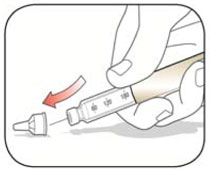 |
Step 16:
|
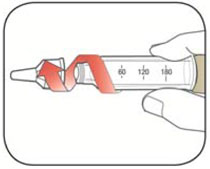 |
Step 17:
|
 |
- Put your used needles in a FDA-cleared sharps disposal container right away after use. Do not throw away (dispose of) loose needles in your household trash.
- If you do not have a FDA-cleared sharps disposal container, you may use a household container that is:
- -
- made of a heavy-duty plastic,
- -
- can be closed with a tight-fitting, puncture-resistant lid, without sharps being able to come out,
- -
- upright and stable during use,
- -
- leak-resistant, and
- -
- properly labeled to warn of hazardous waste inside the container.
- When your sharps disposal container is almost full, you will need to follow your community guidelines for the right way to dispose of your sharps disposal container. There may be state or local laws about how you should throw away used needles and syringes. For more information about safe sharps disposal, and for specific information about sharps disposal in the state that you live in, go to the FDA's website at: http://www.fda.gov/safesharpsdisposal
- Do not dispose of your used sharps disposal container in your household trash unless your community guidelines permit this. Do not recycle your used sharps disposal container.
- The used Pen may be discarded in your household trash after you have removed the needle.
Storing your Pen
Unused Pens
- Store unused Pens in the refrigerator at 36°F to 46°F (2°C to 8°C).
- Do not freeze your insulin. Do not use if it has been frozen.
- Unused Pens may be used until the expiration date printed on the Label, if the Pen has been kept in the refrigerator.
In-use Pen
- Store the Pen you are currently using at room temperature [up to 86°F (30°C)]. Keep away from heat and light.
- Throw away the HUMULIN 70/30 Pen you are using after 10 days, even if it still has insulin left in it.
General information about the safe and effective use of your Pen
- Keep your Pen and needles out of the reach of children.
- Do not use your Pen if any part looks broken or damaged.
- Always carry an extra Pen in case yours is lost or damaged.
Troubleshooting
- If you can not remove the Pen Cap, gently twist the cap back and forth, and then pull the cap straight off.
- If the Dose Knob is hard to push:
- -
- Pushing the Dose Knob more slowly will make it easier to inject.
- -
- Your Needle may be blocked. Put on a new Needle and prime the Pen.
- -
- You may have dust, food, or liquid inside the Pen. Throw the Pen away and get a new Pen.
If you have any questions or problems with your HUMULIN 70/30 KwikPen, contact Lilly at 1-800-LillyRx (1-800-545-5979) or call your healthcare provider for help. For more information on HUMULIN 70/30 KwikPen and insulin, go to www.lilly.com.
Scan this code to launch
www.humulin.com
This Instructions for Use has been approved by the U.S. Food and Drug Administration.
HUMULIN® and HUMULIN® KwikPen® are trademarks of Eli Lilly and Company.
Revised: January 6, 2017
Marketed by: Lilly USA, LLC
Indianapolis, IN 46285, USA
Copyright © 2013, 2017, Eli Lilly and Company. All rights reserved.
| HUMULIN 70/30 KwikPen meets the current dose accuracy and functional requirements of ISO 11608-1:2014. |
LIN7030KP-0003-IFU-20170106
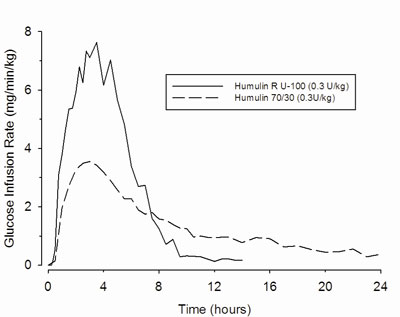
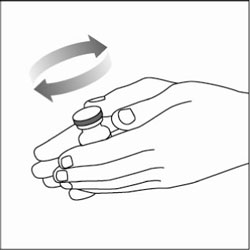
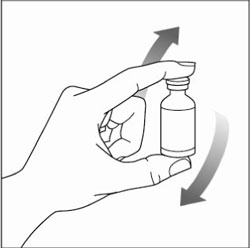
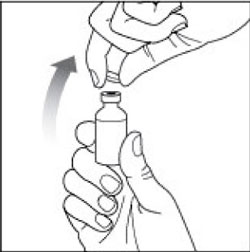
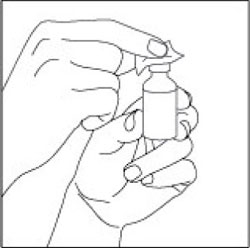
 (Example Dose: 20 units shown)
(Example Dose: 20 units shown)
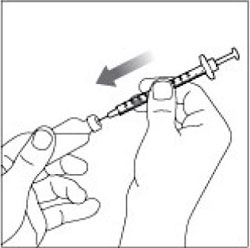
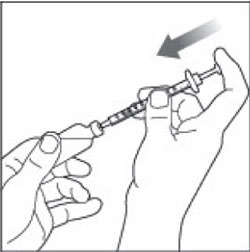
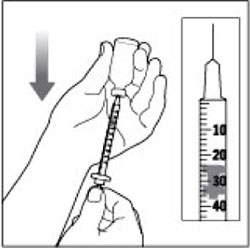 (Example Dose: 20 units Plunger is shown at 24 units)
(Example Dose: 20 units Plunger is shown at 24 units)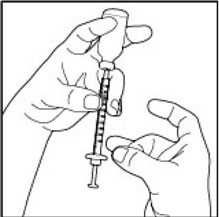
 (Example Dose: 20 units shown)
(Example Dose: 20 units shown)

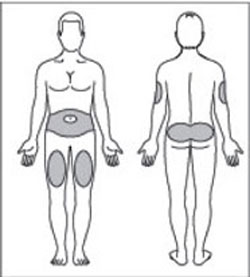

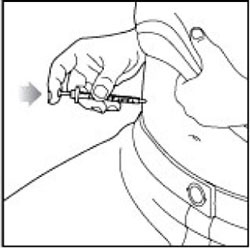
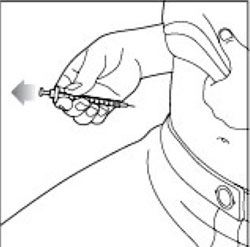



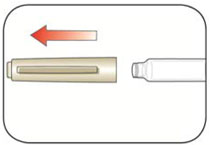
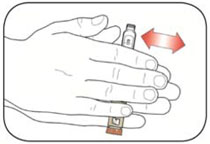
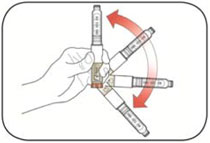


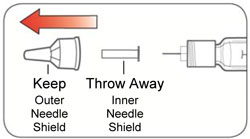


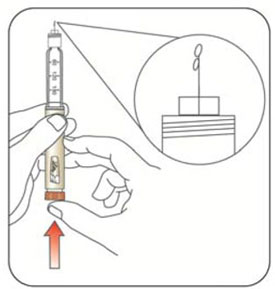

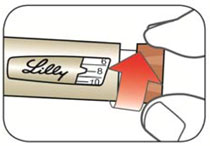
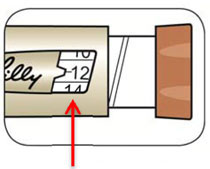 (Example: 12 units shown in the Dose Window)
(Example: 12 units shown in the Dose Window)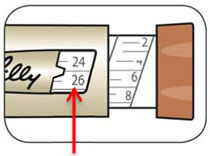 (Example: 25 units shown in the Dose Window)
(Example: 25 units shown in the Dose Window)


